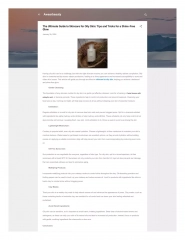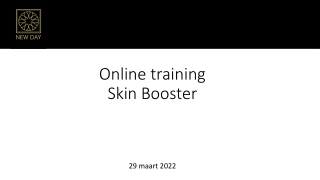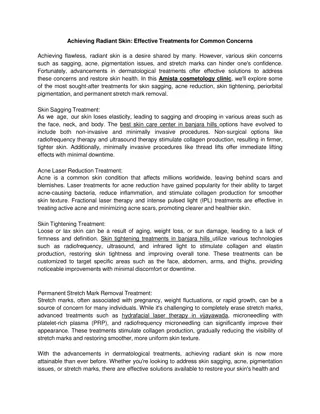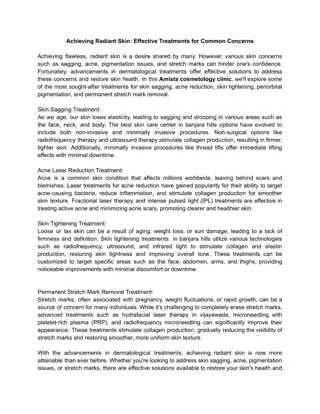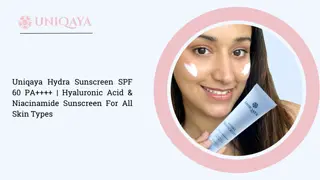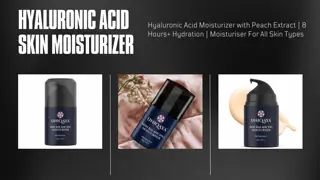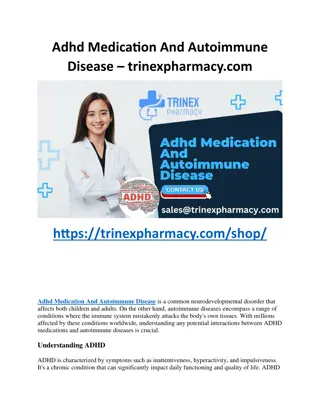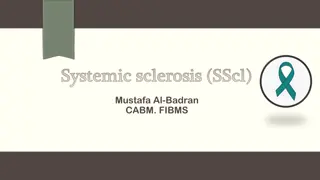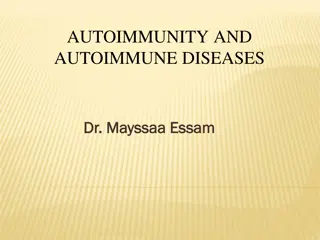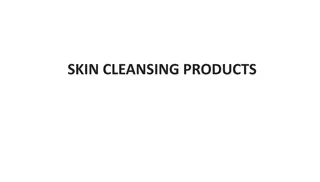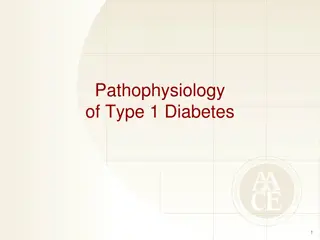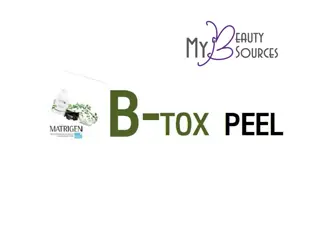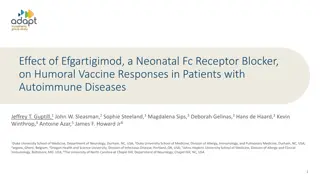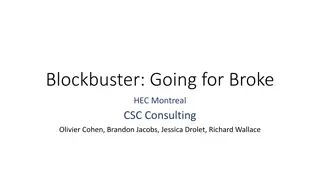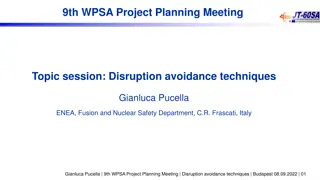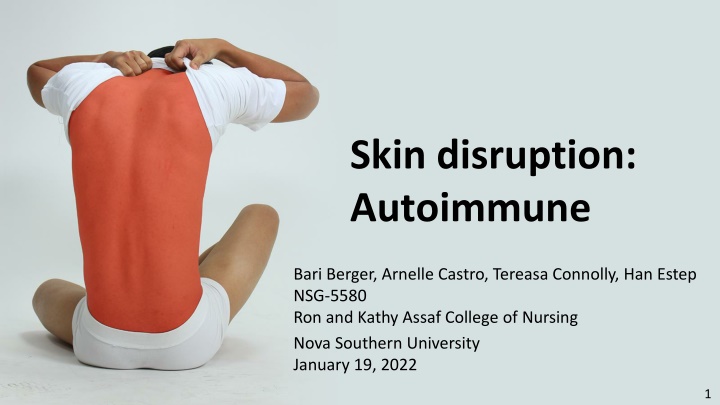
Skin Disruption: Autoimmune vs. Infectious Conditions
Explore the differences between autoimmune and infectious skin conditions like Kawasaki disease and fungal infections. Learn about their common indicators, exam findings, and management approaches. Gain insights into these dermatological disruptions affecting children and adults.
Download Presentation

Please find below an Image/Link to download the presentation.
The content on the website is provided AS IS for your information and personal use only. It may not be sold, licensed, or shared on other websites without obtaining consent from the author. If you encounter any issues during the download, it is possible that the publisher has removed the file from their server.
You are allowed to download the files provided on this website for personal or commercial use, subject to the condition that they are used lawfully. All files are the property of their respective owners.
The content on the website is provided AS IS for your information and personal use only. It may not be sold, licensed, or shared on other websites without obtaining consent from the author.
E N D
Presentation Transcript
Skin disruption: Autoimmune Bari Berger, Arnelle Castro, Tereasa Connolly, Han Estep NSG-5580 Ron and Kathy Assaf College of Nursing Nova Southern University January 19, 2022 1
Definition Kawasaki Mucocutaneous lymph node syndrome 2000 cases/year in the U.S Self-limited vasculitis with predilection for coronary arteries Unknown causes possibly an immune response to bacterial infection Life threatening Fungal Scaly or vesicular rash Tinea Capitis cause by Trichophyton tonsurans Human to human, handling of dogs, cats with Microspoorum canis Untreated lead to cellulitis, ulcers, and alopecia (Gupta et al., 2018), (Kovitwanichkanont& Chong, 2019), (Some Guy, 2014) 2
Infectious vs. Communicable Kawasaki Infectious An autoimmune reaction resulting from an infectious organism Can not be transmitted from person to person. Fungal Communicable Contagious Can be transmitted from person to person (Correll, 2021) 3
Common Indicators Upon History Kawasaki Children aged 2-5, 20:100,000 children Males 50% more likely to have the disease Incidence is higher in Asian and Pacific Islanders 30:100,000 Winter-Spring predominance of cases Fungal most common cutaneous fungal infection in children between 3 and 7 years of age (Gupta et al., 2018), (Some Guy, 2014), (UptoDate, 2021) 4
Exam Findings Kawasaki Acute outbreaks (lasts 10 14 days), fever > 5 days and 4 of the following symptoms: Conjunctival injection (bilateral) Strawberry tongue, fissures, lips cracked Desquamation or swelling of fingers and toes Erythematous rash (starts on palms and soles) Enlarged (>15mm) cervical lymph nodes Leukocytosis is common Elevated C-reactive protein and erythrocyte sedimentation rate noted in the subacute phase (beginning 10 - 14 days after onset as the fever and rash improve). 5 (Hay et al., 2020, Chapter 15&20), (Some Guy, 2014), (Yale, Tekiner, & Yale, 2020)
Incomplete Kawasaki Most likely will not see Cervical adenopathy Rash It is recommended that all children less than 5 with a fever of unknown origin have a workup for Kawasaki Disease Positive workup will reveal: elevated CRP and ESR with NCNC anemia and one of these elevated: WBC, Platelet count, Serum Alanine Aminotransferase, Serum Albumin, or Pyuria with >10 WBC (UptoDate, 2021)
Exam Findings Fungal Infections Tinea capitis superficial cutaneous fungal infection AKA ringworm Patchy alopecia, broken hair, scaling of scalp, scarring with inflammation Tinea corporis, pedis, cruris, and ungium Vesicles on palms, soles, and sides of fingers, trunk and groin Few lab testing on healthy children, diagnosis is made clinically May perform Wood's Lamp, culture, or histologic tissue examination (Berkowitz, 2020), (Iannelli, 2021), (Kovitwanichkanont& Chong, 2019) 6
Treatment Options Kawasaki Medications High dose Aspirin (ASA) IV immunoglobulin (IVIG) Adverse effects Coronary artery aneurysms Dosing ASA 50mg/kg/day IVIG 2g/kg/day F/U Cardiac monitoring is required during the convalescent phase (see in the 4 or 5thweek) and for a year or more if aneurysms are detected. (Hay et al., 2020, Chapter 15&20), (Ito et al., 2020), (Some Guy, 2014) 7
Treatment Options Fungal Infection Medications Trichophyton tonnsurans - terbinafine, itraconazole, diflucan Microsporum Canis Griseofulvin (most cost effective) Shampoo twice a week with Ketoconazole or selenium sulfide Adverse effects: rash, gi upset, diarrhea Dosing Diflucan 6mg/kg/day, itraconazole 5mg/kg/day, terbinafine > age 4, 4-6mg/kg/day; Griseofulvin 20-25mg/kg/day Ketoconazole 2% for age >12 years (Gupta et al., 2018) 8
Anticipatory Guidance Kawasaki Fungal Diaper dermatitis very common More prevalent in warm or moist climates or areas of the body Fungus can be found any where on the body Treatment takes a while but is most often successful Keep area clean and dry Do not share sheets, towels, etc. Warn parents that they might see: Changes in the oral cavity, extremities, and a rash that will flake off Explain the treatment Explain the Risk levels and the long-term management (Hay et al., 2020, Chapter 15&20), (Mendez, 2021) 9
Differential DX Kawasaki Fungal infections Scarlet fever Toxic shock syndrome Measles Stevens-Johnson syndrome Rocky mountain spotted fever Seborrheic dermatitis Atopic dermatitis Psoriasis Pityriasis rosea (Hay et al., 2020, Chapter 15&20), (Jindal et al., 2019), (Kovitwanichkanont& Chong, 2019) 10
References Berkowitz, C.D. (2020) Berkowitz's pediatrics: A primary care approach (6th ed.) American Academy of Pediatrics. Correll, R. (2021, March 2). Differences between communicable and infectious diseases. Verywell Health. https://www.verywellhealth.com/the-difference-between- communicable-and-infectious-diseases-4151985 Gupta, A. K., Mays, R. R., Versteeg, S. G., Piraccini, B. M., Shear, N. H., Piguet, V., Tosti, A., & Friedlander, S. F. (2018). Tinea capitis in children: A systematic review of management. Journal of the European Academy of Dermatology and Venereology : JEADV, 32(12), 2264 2274. https://doi- org./10.1111/jdv.15088 11
References Hay, W., Levin, M., Abzug, M., & Bunik, M. (2020). Current diagnosis and treatment pediatrics, twenty-fifth edition (current diagnosis & treatment) (25th ed.). McGraw-Hill Education / Medical. Iannelli, V. (2021). What is ringworm? Verywell Health. https://www.verywellhealth.com/ringworm-overview-2632044?print Ito, Y., Matsui, T., Abe, K., Honda, T., Yasukawa, K., Takanashi, J., and Hamada, H. (2020). Aspirin dose and treatment outcomes in Kawasaki disease: A historical control study in Japan. Frontiers in pediatrics. https://www.frontiersin.org/articles/10.3389/fped.2020.00249/full 12
References Jindal, A. K., Pilania, R. K., Prithvi, A., Guleria, S., & Singh, S. (2019). Kawasaki disease: Characteristics, diagnosis, and unusual presentations. Expert review of clinical immunology, 15(10), 1089 1104. https://doi-org./10.1080/1744666X.2019.1659726 Kovitwanichkanont, T., & Chong, A. H. (2019). Superficial fungal infections. Australian journal of general practice, 48(10), 706 711. https://doi-org./10.31128/AJGP-05-19-4930 Mendez, B. (2021, July 22). Diaper dermatitis - statpearls - ncbi bookshelf. StatPearls. https://www.ncbi.nlm.nih.gov/books/NBK559067/ 13
References Some Guy. (2014, October 13). ERBC 8 pediatric rashes [Video]. Youtube. https://youtu.be/GIfUuyU1T3Q UptoDate. (2021, December 6). Incomplete (atypical) kawasaki disease. App Store. https://apps.apple.com/us/app/uptodate/id334265345 13

